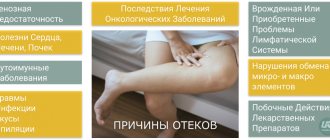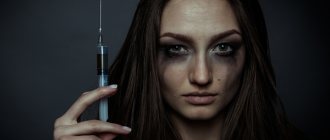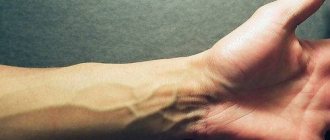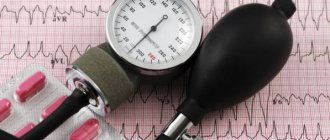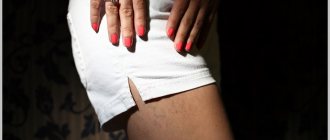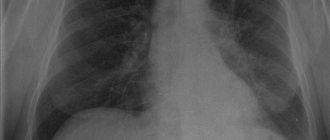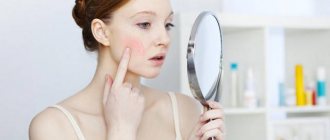How to remove capillaries on the face using photorejuvenation?
Photorejuvenation is a modern cosmetic procedure during which defects are removed using a high-intensity light source. The procedure is more effective when compared with laser removal, but you will notice the result after 2-4 sessions.
This type of rejuvenation allows you to make the skin more elastic, returning its natural color and elasticity. You will forget about vascular networks on your face for a long time if you follow the cosmetologist’s recommendations!
Also in the section
- Facial care
- Get rid of a bad pillow - preserve your beauty
- Cosmetic ice for washing - do it yourself
- A cosmetologist will create a new face shape for you
- Day and night creams
- How to use colored clay
The first spider veins and veins on the skin can appear in childhood.
Bursted blood vessels turn into red “stars” of different sizes, the vascular network becomes more noticeable on the face over time, after thirty, the pink veins become purple and increase in size.
Special care, including medicinal cosmetics and salon procedures, will help strengthen capillaries and remove redness.
Capillaries on the face - reasons for their appearance
In most cases, the vascular network becomes noticeable in people with sensitive and fair skin. The causes of bursting capillaries on the face can be different:
- regular exposure to ultraviolet radiation, frequent visits to the solarium - lead to damage to the walls of blood vessels and their expansion on the surface of the face and body;
- smoking;
- working conditions associated with temperature changes;
- passion for saunas, hot baths and steam baths, which leads to vasodilation;
- pathologies of the cardiovascular system;
- physical and mental overloads have a detrimental effect on the skin and provoke the appearance of vascular networks;
- gynecological diseases and some contraceptive drugs that lead to hormonal imbalance.
Some women report that capillaries can burst on their face after performing alpha gymnastics.
Also, the reasons for the manifestation of an aesthetic defect may lie in the food consumed. The following products have a negative impact on skin health:
- rich black tea and coffee;
- cocoa and chocolate;
- pickled and canned vegetables;
- pickles and smoked meats;
- addiction to herbs and spices;
- excessive consumption of alcoholic beverages;
- love of hot and spicy dishes.
Sometimes red dots may appear on the child’s face, as if the capillaries have burst. The main source of this problem is considered to be a genetic predisposition; the condition is aggravated by frequent exposure to UV rays.
Asterisks in children may indicate viral hepatitis or liver dysfunction.
A common cause of bursting capillaries on a child’s face is poor circulation and the further development of vascular diseases.
Only a specialist can tell you exactly why the disease occurs, and you should contact him if alarming symptoms occur.
Therapeutic cosmetics for capillaries
During the cold season, protect your facial skin with protective jelly creams that contain aromatic oils that strengthen capillaries: rosemary, lemongrass, Japanese mint. Aroma oils can also be added to ready-made creams: 5 drops per 1 teaspoon of cream.
If rosacea develops, choose vasoconstrictor creams containing chamomile, menthol, and mint. Creams containing honey are contraindicated for you.
Wash only with warm water (not hot), protect your facial skin from the sun, do not get carried away with strong alcoholic drinks, as well as black tea and coffee, salty and spicy foods.
Therapeutic procedures (10 tips)
At home, you can both remove capillaries on the face and improve the condition of the skin.
To do this, just use the following methods:
- Application of esters that help strengthen blood vessels: tamanu, rosemary.
- Use of pharmaceutical products. The most accessible include D-panthenol, echinacea and aloe extracts, zinc and heparin ointments. These drugs suppress the inflammatory process and relieve irritation. Products are applied only to cleansed, dry skin. As an additional measure, it is recommended to take vitamins A, C, K, P.
- Camomile tea. For treatment at home you will need 3 tbsp. spoons of dried flowers, which are poured with 250 ml of boiling water. After cooling, the infusion is filtered and applied as a lotion to problem areas.
- Nettle mask. Fresh sprouts are crushed to a homogeneous consistency, diluted with a few drops of sesame oil. The composition is applied to problem areas and washed off with warm water after 15 minutes.
- Potato mask. How to eliminate the deficiency with the help of this vegetable? Peeled and finely grated potatoes are applied to the surface of the face for 10 minutes, then washed off with infusion of calendula or chamomile. This product whitens and revitalizes the complexion well.
- Peeling. For rosacea, doctors do not recommend aggressive peelings, but, for example, enzyme peeling can be beneficial. It acts carefully, without harming the capillaries on the face. It is recommended to carry out the procedure 2 times a week if your skin type is oily, and once every 10 days if it is dry. After such a session, moisturize the skin with any oil that contains vitamins P, K or C.
- Cold and hot shower. It will help improve blood circulation and strengthen blood vessels. In addition, contrast showers have a positive effect on the immune system. The water should not be too cold right away. The temperature should be lowered gradually.
- Green tomato. Its peel is removed, and the pulp in the form of a paste is applied to the face for a quarter of an hour.
- Clay. Combine the clay with a crushed Ascorutin tablet, add water, apply to the skin for 5 minutes. If your skin is oily, then you can leave the mask on for a quarter of an hour.
- Gymnastics for the face. Few people know that some facial exercises can improve the condition of the skin and have a positive effect on the health of blood vessels. To do this, press your palms to your cheeks and move them up and down. Next, extend your lips to form the letter “O”. You should hold this position until you feel muscle tension. It is also useful to draw air into your cheeks and throw it from one side to the other.
Acupuncture in strengthening blood vessels
The ability to remove blood vessels on the face with a laser does not relieve the need to strengthen them. After all, only elastic capillaries with good tone contribute to normal blood flow, preventing the appearance of mesh and redness on the skin. The following masks, which you can make with your own hands, help strengthen facial blood vessels.
Day mask
Take extracts of blueberries and mimosa flowers, broom leaves, galangal roots, cypress seeds and grape seed oil. Mix all components, taken equally. Apply to the skin of the face. To enhance the effect, cover with a cloth moistened with hot water. Wash off the mask with warm water. Lubricate your face with a cream appropriate to your skin. Both masks are made every other day for two months.
Take a tablespoon of chokeberry berries, two tablespoons of hawthorn flowers and mistletoe leaves. Brew them in a thermos with a liter of boiling water and leave. Drink half a glass three times a day.
Night mask
It contains Sophora extract, dandelion roots, calendula flowers and essential oil from grape seeds. All components are taken equally. The mask is evenly distributed over the front surface. Excess is removed with a soft cloth.
Acupuncture or exposure to biologically active points is used in the treatment of many diseases. Tibetan medicine offers several simple exercises that affect the active points of the hands, responsible for restoring normal blood flow. This technique is called Kumnyai.
- Stand up straight. Place your hands in front of your chest, palms with interlaced fingers facing your face. It is necessary to separate them by slowly pulling your palms in different directions.
- The situation is the same. But only the little fingers are closed. Repeat the previous movement, trying to separate them.
- Repeat this exercise with each finger.
- Place the little finger of one hand between the middle and index fingers. He needs to be pulled out of there. After 10 repetitions, perform the exercise, squeezing the fingers of one hand and then the other hand in turn.
Each exercise must be performed at least 10 times.
Therapeutic plastic massage
Regardless of why the capillaries on the face burst, regular massage cannot be used. But therapeutic plastic manipulations help get rid of the defect or prevent its occurrence.
As a result, skin tone increases and vascular networks become less noticeable.
Medications are prescribed to patients if the cause of the illness is internal disorders: hepatitis, endocrine diseases and others.
If capillaries on the face arise due to external factors, treatment consists of eliminating or reducing their effect on the patient’s body.
Recommendations after the procedure
An important point after eliminating the manifestations of any type of rosacea is to prevent relapse, that is, the appearance of new vascular networks. To do this, you must follow all the doctor’s recommendations and instructions in the postoperative period, which are as follows:
- Injury to the treated area of skin should be avoided.
- For 24 hours, do not use alcohol-containing lotions or other cosmetics for skin care, and avoid makeup.
- For two weeks, cover your face with the brim of a hat from exposure to sunlight. During the same period it is prohibited to visit the solarium.
- To protect the crust from ultraviolet exposure at the site of treatment, treat the area around it with a special sun protection cream (filter 20). After the crust disappears, continue using this cream for the entire treated surface.
- The crust should not be wetted, touched with hands, or tried to be torn off, as new capillaries are forming underneath it. It will fall off on its own in a few days.
Treatment of closely located vessels and capillaries on the face
If a pink or bluish mesh of tiny blood vessels appears on the skin of the face, this indicates the vascular disease rosacea.
This is not just a cosmetic defect that provokes a change in the color of the skin on the face, but also a serious pathology, which is accompanied by a disruption in the nutrition of the deep layers of the dermis at the site of damage.
Treatment of closely located vessels is carried out using hardware techniques, proper nutrition, taking vitamins, minerals, and immunostimulants.
Signs of damage to the veins of the genital organs
With superficial varicose veins, the symptoms are difficult to confuse with signs of other diseases.
Characteristic signs of venous insufficiency
And if in the first stages spider veins do not cause concern, then with the development of pathology:
- Veins begin to clearly appear through the skin. As diseased vessels expand and lengthen, they begin to twist and take on an unnatural shape. Changes are noticeable visually and can be felt by palpation.
- Skin symptoms are added. Due to insufficient tissue nutrition, the skin dries out, pigment spots and itching appear. Significant oxygen starvation provokes the development of eczema and dermatitis.
- There are muscle problems. Muscle tissue weakens, throbbing pain is felt after minor exertion, and cramps occur.
A complete list of primary signs of pathology can be found in the article “First symptoms of varicose veins on the legs.”
Genital varicose veins
Features of blood supply to the skin
One of the main features of the blood vessels of the skin is their ability to reflexively narrow or expand from external influences on nerve endings.
Nerve endings are irritated by exposure to high or low temperatures or any mechanical actions (impact or friction). They are also affected by certain chemicals. Blood vessels in the skin can expand or contract due to the emotions a person experiences: shame, joy, anger, excitement, etc.
The skin contains a large number of arteriovenous anastomoses, which play a significant role in thermoregulation. Most of them are found in the skin of the ears, the tip of the nose, and on the fingers and toes. Also, the blood supply to the skin affects the proper functioning of nerve endings and muscles.
General treatment recommendations
If examination by a specialist does not reveal serious diseases, you can deal with the vein by taking complex vitamins or venotonics. These medications are prescribed by the attending physician based on the patient’s health status.
To prevent the defect from becoming stronger, you should avoid sudden weight loss, adhere to the rules of a balanced diet, maintain a drinking regime and do not drink large quantities of liquid before bedtime.
Expert opinion
Kim Oksana Alexandrovna
Head of the ophthalmology clinic. Ophthalmologist with more than 10 years of experience.
You cannot stay in one position for a long time, even when working at the computer, you should maintain your posture and take breaks to warm up. You should get plenty of rest and sleep, and stop watching TV at night. Being in the bright sun or a chilling wind will also not bring benefits; you should avoid solariums and saunas.
Nutrition for rosacea
You should make changes to your eating habits, eliminating foods that provoke the appearance of rosacea. Harmful foods in this case include spicy and salty foods, canned food, alcohol, beer, coffee. It is necessary to minimize the amount of foods with a high fat content: cheeses, liver, sour cream.
- Take vitamins or dietary supplements containing vitamins C, P, K and silicon, antioxidants, Omega 3 and 6 fatty acids, blueberry, chestnut, arnica, mimosa, myrtle, echinacea, grape seed oil, rutin and collagen extracts.
- They significantly influence the condition of blood vessels, regulate capillary permeability, and strengthen the walls of blood vessels.
- Start eating foods high in silicon and vitamins C, K and P.
Silicon is present in large quantities in Jerusalem artichoke, buckwheat, oatmeal, beans, peas, and corn. Dishes from these products should be present in your diet every day!
Foods that strengthen blood vessels: spinach, currants, cabbage, rose hips, tomatoes, blueberries, rowan berries, walnuts, oranges and lemons, and it is better to eat them with the peel containing a large amount of vitamin P.
Drug therapy
Drug therapy serves as a complement to the hardware method of removing vascular networks on the face. It includes drugs whose action is aimed at strengthening the blood vessels on the face and preventing the appearance of new signs of rosacea. These include:
- Ascorutin is a drug that reduces vascular permeability and reduces capillary fragility, due to the content of vitamins P and C.
- Alpha-linoleic acid Omega-3. It increases the elasticity of blood vessels. Thanks to this fatty polyunsaturated amino acid, the formation of atherosclerotic plaques is reduced.
- Alpha tocopherone or Pinogen. These antioxidants help remove metabolic products from blood vessels.
- The drug Gingo-biloba has a similar effect.
Medicinal ointments for local treatment are prescribed by the attending physician. It is recommended to use a special cosmetic cream for rosacea, a delicate light green color. It can be found in pharmacies and beauty centers. The most popular are the following:
- Tiande;
- Uriage Roseliane;
- Alezans Lierak, containing seaweed;
- Sensibio from Bioderma, which is excellent protection against the adverse effects of temperature changes;
- Doctor Taffy with calendula.
Many manufacturers offer samples of their products. This allows you to check the effect of the cream and its compatibility with the patient’s skin. Which is very convenient, since these products are expensive.
Signs of a problem (3 main symptoms)
A smooth and clean face with a uniform healthy color is the dream of every woman. However, it is not always possible to achieve an ideal result even with careful implementation of caring procedures, since capillaries on the face can worsen the appearance.
Spider veins can be located on any part of the body. Initially, small dots appear on the skin, which subsequently transform into threads.
This phenomenon is called rosacea, which is exactly what this problem is called. Often it is only an external flaw that brings anxiety.
Several stages can be distinguished in the development of pathology:
- The skin becomes very red and itchy after drinking alcohol, severe overheating or hypothermia, which is explained by the presence of vasodilatation. Gradually, the face acquires its normal color, but redness may appear again and again, being the initial stage of the development of rosacea.
- There is a mesh on the face, and the blood vessels can no longer contract normally, resulting in a feeling of tightness and dryness. At this time, it is important to consult a specialist to stop the progression of the disease.
- Due to the fact that capillaries burst on the face, blood microcirculation and the process of nutrition of epidermal cells are disrupted. Congestion and inflammation of tissues appear, and symptoms of rosacea often occur. In such severe cases, the patient needs full-fledged professional therapy.
You can recognize the problem by red or purple vascular veins. They are located on the chin, cheeks, and cheekbones.
Often capillaries become noticeable on the wings of the nose. Frequent nosebleeds indicate weakened blood vessels.
Skin vasodilation
The reticular form of varicose veins is characteristic of damage to superficial veins located close to the skin. With such varicose veins, the signs rarely cause alarm, since they are mostly manifested by cosmetic defects. Almost the only sign of such a pathology is a vascular “pattern”, which can be accompanied by a change in the color of the skin.
Spider veins
It is extremely rare for patients to complain of short-term mild itching in the area of dilated vessels.
Such symptoms do not cause alarm among most doctors, who classify reticular varicose veins as a cosmetic defect. But no doctor can predict whether the vascular network will develop into more serious problems associated with venous insufficiency, or whether it will remain a “pattern” on the legs.
Against the background of the presence of a vascular network, the characteristic first signs of varicose veins may begin to appear:
- your legs swell and begin to hurt, especially in the evening;
- after prolonged exercise, heaviness occurs in the lower extremities;
- convulsions appear;
- pinpoint subcutaneous hemorrhages are observed.
Such symptoms of varicose veins signal the development of venous insufficiency, but are rarely perceived by patients as signals of a serious illness.
Venous insufficiency affects the entire cardiovascular system. Hands are often the target of damage. However, patients with varicose veins do not always associate symptoms provoked by vein disease in the arms with the true cause.
Hand disease
We suggest you read: Varicose veins of the stomach
In addition to the presence of characteristic swelling of the veins in the upper extremities, the patient may experience:
- feeling of heaviness in the hands;
- constant or recurrent pain;
- walking pains;
- “ache” of bones when the weather changes;
- numbness, tingling in the fingers;
- muscle cramps;
- rapid hand fatigue;
- inability to perform the same type of actions for a long time;
- decreased productivity;
- problems with fine motor skills.
Such symptoms occur in many joint diseases. Therefore, until characteristic venous swellings appear on the arms, a person does not associate pain and weakness with signs of varicose veins.
Signs of varicose veins on the face differ depending on the location of the pathology:
- Skin on the face. The typical location of vascular changes is the cheek area and the wings of the nose. A harbinger of varicose veins are spider veins on the skin, which are commonly called rosacea. Later, larger veins expand, and symptoms of trophic changes join the primary symptoms. At the site of blockage of even small vessels, tingling and itching are felt.
Couperosis on the face
- Veins of the eyes. The walls of the blood vessels in the chambers, as well as under the orbit, become thinner. Externally, this pathology manifests itself as bags under the eyes of a light purple hue. Upon close examination, the venous network is visible.
- On the lips. It manifests itself in the formation of a nodule that has a dark red color. When a vessel is blocked by a thrombus, the color changes to bluish.
- On the tongue. Large vessels are located here, which can thicken to form burgundy-colored nodules.
Varicose veins on the face cannot be classified as a harmless type of disease, since in advanced stages it has characteristic complications. Moreover, it is impossible to cure venous insufficiency in such a location using standard methods using medications and venotonics. The problem can only be dealt with through surgical, minimally invasive means. Percutaneous laser therapy has proven itself well.
The genital type of venous insufficiency causes a lot of discomfort for both men and women. External signs in the form of nodules in the groin area over time acquire new symptoms, bringing not only painful sensations, but also psychological problems.
Genital varicose veins
Women with such varicose veins often confuse the symptoms with manifestations of gynecological diseases, as they are bothered by unpleasant sensations in the form of:
- burning and pain in the vagina;
- pain in the lower abdomen;
- discomfort associated with sexual intercourse.
The menstrual cycle is disrupted, which can result in painful premenstrual syndrome, scanty discharge and dysmenorrhea. Changes may also affect the bladder, resulting in problems with urination.
Externally, in the intimate area: directly on the labia, on the perineum - venous nodules appear, the skin becomes thinner, which is manifested by dryness, itching, and pigmentation. The labia may become swollen, enlarged, and deformed.
In men with genital varicose veins, symptoms are nonspecific. Most often, the lesion spreads to the testicles, which in medical practice is called varicocele. But veins can become enlarged and swollen directly on the penis, as well as in the groin. In this case, the man experiences:
- discomfort while walking;
- one-sided pain;
- throbbing discomfort;
- problems with urination;
- burning in the groin.
Externally, there is an asymmetrical enlargement of the scrotum, genitals, and swollen veins.
The genital type of the disease inevitably affects sexual activity and provokes the development of complexes and psychological instability.
Hemangiomas
Causes of closely located vessels on the face
The dominant cause of the pathological condition is impaired blood circulation on the surface of the skin - in the upper layers of the epidermis. Due to stagnation in the capillaries, their wall becomes thinner due to excessive load, becomes fragile and brittle.
Important: factors contributing to the development of pathology include genetic predisposition, light skin tone, high sensitivity of the skin to external influences (sun, frost, etc.).
If the vessels on the face are located close to the surface, the reasons may lie in the following diseases:
- Disorder of hormonal balance in the body. Perhaps this pathogenesis is the most common in the modern world. An imbalance develops not only as a result of various pathologies, but also during pregnancy, after birth, when taking contraceptives and hormonal medications. Additionally, there are symptoms: changes in body weight not related to nutrition and physical activity, emotional lability, sleep disturbance;
- Insufficient functionality of the gonads. This reason is often observed in boys and girls during puberty;
- Persistent increase in blood pressure. A decrease in blood pressure leads to a reduction in the number of spider veins. However, the disease requires medical supervision to prevent complications such as pulmonary edema, heart attack, stroke;
- Disorders of the digestive and gastrointestinal tract, dysbacteriosis, enterocolitis;
- Varicose veins, kidney disease, tendency to develop allergies, etc.
Along with the causes, provoking factors are also identified, as a result of which the vessels on the face appear too clearly. These include sudden temperature changes, aggressive climate, bad eating habits, and excessive consumption of caffeine-containing drinks.
Skin vasodilation
Telangiectasia
The most common disease observed in young women is telangiectasia.
As it develops, a network of blood vessels appears on the face. It is often inherited if one of the parents (or grandmothers) had one of the skin diseases such as acrodermatitis or rosacea. In this case, you should not postpone a visit to a dermatologist. However, I would like to remind you that these harmless diseases should not be confused with systemic lupus erythematosus, although many are in a hurry to make a similar diagnosis for themselves or someone else. SLE is characterized by a “butterfly” located on the wings of the nose and cheeks, and, unfortunately, this is far from the only symptom of this severe pathology. Systemic lupus erythematosus affects the entire body.
Telangiectasia can be acquired, developing in people of certain professions who have to work outside in any weather. For example, at retail outlets in open markets or at a construction site. Very often its signs appear on the faces of janitors and geologists, cooks, etc. Temperature changes cause the blood vessels in the cheeks to dilate.
Rosacea
Rosacea is one of the most unpleasant types of rosacea. With this disease, inflamed areas of red or pink color appear on the skin of the face. Their appearance is caused by the process of expansion of capillary vessels. Symptoms of rosacea occur with severe emotional shock (fear, worry about loved ones, anger).
The first symptoms of rosacea resemble a scattering of acne in teenagers, which is located on the forehead, cheeks, chin and even on the nose. But over time (if appropriate treatment is not carried out), small pimples turn into large red nodules or rhinophyma. They can lead to a permanent loss of attractiveness. Rosacea is treated with diode lasers.
Hemangiomas
This disease belongs to benign neoplasms. Most often it is congenital (with abnormal development of vascular walls) or occurs in early childhood due to vascular damage. Unlike other types of manifestations of rosacea, the surface of the hemangioma is quite dense and protrudes slightly above the skin.
Hemangioma itself is not dangerous. In children, it usually resolves spontaneously by school age. But with strong growth, it can disrupt the normal development of other vessels and various organs. Hemangioma located on the eyelids requires mandatory treatment. An argon laser is used to remove hemangiomas.
Many parents are concerned about the appearance of redness in the child's eye. Most often this is due to a violation of the integrity of the eye vessel during the game. But sometimes the cause of redness is that a capillary has burst due to high intraocular pressure. This often happens to adults too. In this case, the main thing is to consult an ophthalmologist as quickly as possible. He will determine the cause of the incident and prescribe the correct treatment, which will help in the future to avoid problems with the blood vessels of the eyes.
A person who periodically bursts blood vessels needs to properly care for their skin at home. The following is contraindicated for use:
- Scrubs and peels containing coarse particles that can cause skin irritation;
- Alcohol-containing lotions and other skin care products;
- Creams, gels and other cosmetics that contain menthol or honey (these are strong allergens).
Water for washing should be moderately warm. Hot water, like cold water, causes blood vessels to dilate. After washing, it is not recommended to dry your face; you just need to apply a towel to it for a few seconds to remove excess water.
In a beauty salon, it is better to choose superficial peeling using chemical agents. Steaming and manual massage procedures for rosacea are contraindicated. But masks with collagen, thermal massage, and phytotherapeutic procedures are very useful.
The main rule is to be attentive to the condition of your skin. Choose gentle methods and means of caring for her. And then no cauterization will be required.
Dilated skin vessels are most often visible on the face and legs (thighs, calves). Typically, this disease affects people who have a predisposition to dilation of capillary vessels or those whose vessels are located too close to the surface of the skin. This is due to the fact that the walls of blood vessels quickly lose their elasticity and ability to resist various influences and damage.
On the face, dilated blood vessels appear in people who have dry and thin skin. After 30 years, the top layer of skin, the epidermis, is significantly depleted, and the skin becomes more sensitive to harmful factors. To prevent the consequences of their exposure, it is necessary to use protective agents - special means that block ultraviolet rays, as well as strengthening creams.
Vasodilation in the legs can be caused by poor circulation. If the vessels of the skin are changed for any reason, blood cannot pass freely through them and looks for other paths, as a result of which high pressure arises in the vessels and the veins dilate.
Symptoms of deep vein varicose veins may not appear at all for a long time, since the affected vessels are located far from the skin. Changes when the condition of the deep veins worsens occur abruptly, and symptoms increase rapidly. In this case, signs and symptoms of acute varicose veins are observed:
- Even minimal movements of the leg cause burning or shooting pain.
- The patient feels general weakness and the temperature rises sharply.
- Local swelling develops at the site of the lesion. The skin becomes hyperemic. Severe redness or blue discoloration of the skin may occur.
- Palpation reveals thickening of blood vessels and provokes increased pain.
If such symptoms of varicose veins are present, treatment begins immediately, since acute signs clearly indicate deep vein thrombosis or the presence of clots in the vessels.
Against the background of impaired blood flow, complications of varicose veins develop in the form of ulcerations and tissue necrosis.
The “silent” form of the disease may not give any characteristic signs at all until the vein is completely blocked.
At the last stage of varicose veins, infection can join the inflammatory process, which manifests itself as trophic ulcers and even gangrene.
Problems with skin vessels
As a rule, problems with skin vessels occur in women, because estrogen has a relaxing effect on them.
During pregnancy or taking hormonal medications, women are more at risk of dilating blood vessels in the skin.
Also, dilated and burst blood vessels can be a result of ingesting hot food, alcoholic beverages, or sensitivity to ultraviolet rays and high temperatures. Vitamin deficiency and intoxication can also significantly weaken the walls of blood vessels.
Video: Treatment of varicose veins, small veins on the legs
is not responsible for the accuracy of the information presented in this video clip. Source - Dustin Clary
Sources:
- SYNDROME OF MACROCEPHALY - MARBLE SKIN AND TELEANGIECTASIA. Meshcheryakova T.I., Narogan M.V., Zhilina S.S., Toropchina L.V., Mutovin G.R. // Russian Bulletin of Perinatology and Pediatrics. – 2011. – No. 6. – pp. 74-79.
- GENERALIZED ESSENTIAL TELEANGIECTASIA. Slavin D.A., Shakirova A.Z. // Chief physician of the South of Russia. – 2013. – No. 5 (36). – pp. 39-40.
- POSSIBILITIES FOR DIAGNOSIS AND TREATMENT OF CHRONIC DISEASES OF THE VEINS OF THE LOWER LIMB. Zhane A.K., Zhane Ad. K., Napso H.R., Zhane T.I., Pichugin A.G. // Kuban Scientific Medical Bulletin. – 2010. – No. 9 (123). – pp. 78-84.
- https://www.self.com/story/spider-and-varicose-veins
- https://en.dermatim.net/general-dermatology/enlarged-capillaries/
- https://www.livestrong.com/article/271008-causes-of-broken-capillaries-in-the-legs/
For an accurate diagnosis, contact a specialist.
Preventive actions
Knowing what capillaries look like on the face, as well as the causes of the problem, you can follow simple rules:
- apply sunscreen before going outside;
- do not use cosmetics with abrasive particles and alcohol;
- eat right, exclude pickles, smoked foods, spicy, fried and fatty foods from the menu;
- give up alcohol and tobacco;
- play sports and be outdoors more often;
- If you are predisposed to rosacea, do not use deep facial cleansing or peeling.
Location of blood vessels
The skin has two networks of blood vessels - superficial and deep.
The deep vascular network delivers blood to the hair follicles and sweat glands. It is formed by arteries coming from the subcutaneous tissue. In the dermis they branch into smaller blood vessels.
Further from this vascular network, smaller blood vessels extend perpendicularly upward, which form the superficial vascular system located in the papillary layer of the dermis parallel to the skin surface.
This network delivers blood to the sebaceous glands, sweat ducts and the top of the hair follicles.
Arterial capillaries, originating in the deep vascular network, gradually pass into the cutaneous veins. There are four types of venous plexuses. There are also two networks of lymphatic vessels in the skin: deep and superficial.
Modern techniques for removing rosacea on the face
In the modern world, there are a large number of hardware techniques, medications and folk remedies aimed at combating spider veins. What to do in a given situation is decided by the doctor after studying the clinical picture.
For your information, all methods are based on gluing capillaries or changing the structure of connective tissue.
If it is difficult to choose, the first thing to do is to choose the most gentle methods that are not accompanied by side effects. If unsuccessful, you can move on to stronger methods.
Hardware treatment:
- Electrocoagulation. This method neutralizes the symptoms, so it cannot be called a treatment in the literal sense. Visible blood vessels on the face are removed using weak current discharges. The blood vessel no longer “works”; therefore, it is not visible. The number of sessions depends on the degree of damage. Sometimes one procedure is enough, in some cases it is necessary to carry out several at certain intervals.
- Photorejuvenation is also caused by exposure to light rays, but they have a different wavelength. The manipulation is characterized by a gentle effect, so it can be used on thin areas of the skin. You can get rid of the problem in one procedure.
- Laser treatment involves the use of light of a specific wavelength. It is absorbed by the blood, as a result of which the vessel is “brewed.” Over time, it resolves and nearby tissues are not affected.
- Mesotherapy is a series of injections to a shallow depth. Medicinal components are delivered directly to the target. This treatment is an alternative to ointments, creams, gels and other products that cannot penetrate the connective tissue.
It is recommended to treat with hardware methods in cases where the disease is in an advanced form. Cosmetic and medical products against rosacea do not give the required result.
Salon procedures to remove stars
Large stars are usually removed using electrocoagulation (electric current technique in hardware cosmetology).
A more modern method is photorejuvenation, which consolidates the result with mesotherapy using drugs that strengthen the vascular network.
The newest method of getting rid of vascular networks and individual spider veins on the face and body is laser. The laser “seals” the vessel, as it were, and it immediately disappears. Depending on the condition of the vascular network, a course of laser removal procedures is prescribed; at the initial stage, 1-2 procedures usually help.
The secrets of the human body were revealed to Moscow
Vascular network on the face: the best cream for capricious skin
There are many substances that are effective for caring for couperose skin. They are designed to prevent inflammation, strengthen blood vessels and increase their tone, as well as eliminate existing problems. They also hydrate and protect the skin from external factors such as radiation or temperature changes. These substances include:
- Hesperidin is a flavonoid found in citrus fruits that reduces the permeability of blood vessels.
- Diosmin is a flavonoid that seals blood vessels, increases their tone, has an anti-inflammatory effect, improves lymph circulation and thus has an anti-edematous effect.
- Rutin – has sealing properties of blood vessels, enhances the effect of vitamin C and is often used in combination with it.
- Vitamin C – improves skin immunity, stimulates collagen synthesis, tightens blood vessels and accelerates their healing.
- Horse chestnut - tightens and tones the walls of blood vessels, eliminates swelling and improves blood circulation.
- Violet tricolor - seals blood vessels, regulates metabolism in cells, has an anti-inflammatory and bactericidal effect.
- Barbiturate – reduces vascular permeability, improves blood circulation, moisturizes and heals.
- D-panthenol – soothes irritations and moisturizes the skin.
- Mountain arnica – tightens and constricts blood vessels, relieves inflammation.
- Witch hazel (witch hazel) – contains tannins and flavonoids, tightens blood vessels, improves blood circulation and prevents inflammation, also has an antibacterial effect.
- Bisabolol (chamomile extract) – has anti-inflammatory and antibacterial effects, soothes irritated skin, facilitates healing and prevents inflammation.
- Vitamin K - helps heal wounds, regulates blood clotting processes, improves skin color.
- Allantoin – heals, has an anti-inflammatory effect, moisturizes the skin.
Special exercises
Exercise can strengthen blood vessels, which is good prevention. Gymnastics should not cause mechanical irritation to the skin.
- You need to slowly draw air into your mouth, stretching your cheeks, then slowly release it;
- gently press on the cheeks with your palms and slowly release;
- form a tube with your lips, then slowly relax the muscles.
Dilated capillaries can be eliminated in combination with contrast washes. It is necessary to alternate the water temperature, alternating between cold and hot water. You can use hot compresses, alternating with rubbing with an ice cube, which you need to smoothly move over the skin. You can freeze the herbal decoction, then the result will be more effective. Hot exposure to the skin should be half as long as cold exposure.
The advantages of professional therapy include accelerated results that last for a long period of time. You need to find a beauty salon with professional equipment. The cost of the procedures is much higher than the cost of home treatment.
- Laser removal. The result is visible after the first application of the procedure. Laser treatment has a temporary effect. It does not increase the elasticity of the wall and does not eliminate blood vessels.
- Photorejuvenation. The positive effect is visible after using several regular procedures. The effect is much more stable than after laser therapy. Treatment occurs by exposing the skin to a beam of light.
- Ozone therapy. Capillaries are removed by exposure to ozone - oxygen, which is introduced into the vessels with a micro needle. This method has a stable positive effect.
Procedures should be performed at the optimal temperature time of the year: before the onset of winter or hot summer.
Capillaries also appear as a result of incorrectly selected cosmetics that adversely affect the skin of the face. Good cosmetics help nourish, gently cleanse the skin and increase the elasticity of the vascular wall. When purchasing cosmetics, you need to study the composition, which should include: vitamins PP, K, C, wild myrtle, relict plant - gingko, deciduous witch hazel, mountain arnica.
At the pharmacy you can buy medicine to eliminate vascular networks, cream against stars on the dermis, and aroma oil. The composition of the care products should include: rosemary, lemongrass and mint. Before going out for a walk in the winter, you should apply a protective oily cream. You should not use substances containing: cloves, alcohol, acetone, eucalyptus and honey - they irritate the skin. You can cleanse the skin with gentle peeling.
Prevention
If you are prone to the appearance of vascular networks, you need to carefully care for the dermis of your face. Cosmetic procedures will have a longer lasting effect if certain rules are followed.
- You should avoid saunas and solariums and avoid hypothermia;
- do not allow strong wind to hit your face;
- do not abuse smoking and alcohol;
- do not carry out cosmetic procedures at high temperatures;
- you should adhere to proper nutrition. Add more vegetables and fruits to your diet, containing vitamins C, P, K. Do not drink large amounts of drinks with a high caffeine content;
- Avoid facial redness. Situations of embarrassment, in which redness of the face is possible, can cause increased blood circulation;
- men should replace their electric razor with a manual razor. An electric razor causes severe mechanical irritation to the skin. The condition of the manual machine should be monitored.
People with this problem become uncomfortable in society. Prevention should be observed and appropriate treatment should be taken. What to do when capillaries are clearly visible? If the capillaries are very visible, you can use foundations with a green tint. As a result, if you wondered: why does a woman’s face turn red for no reason, then there are still reasons, you just need to consider it in detail.


